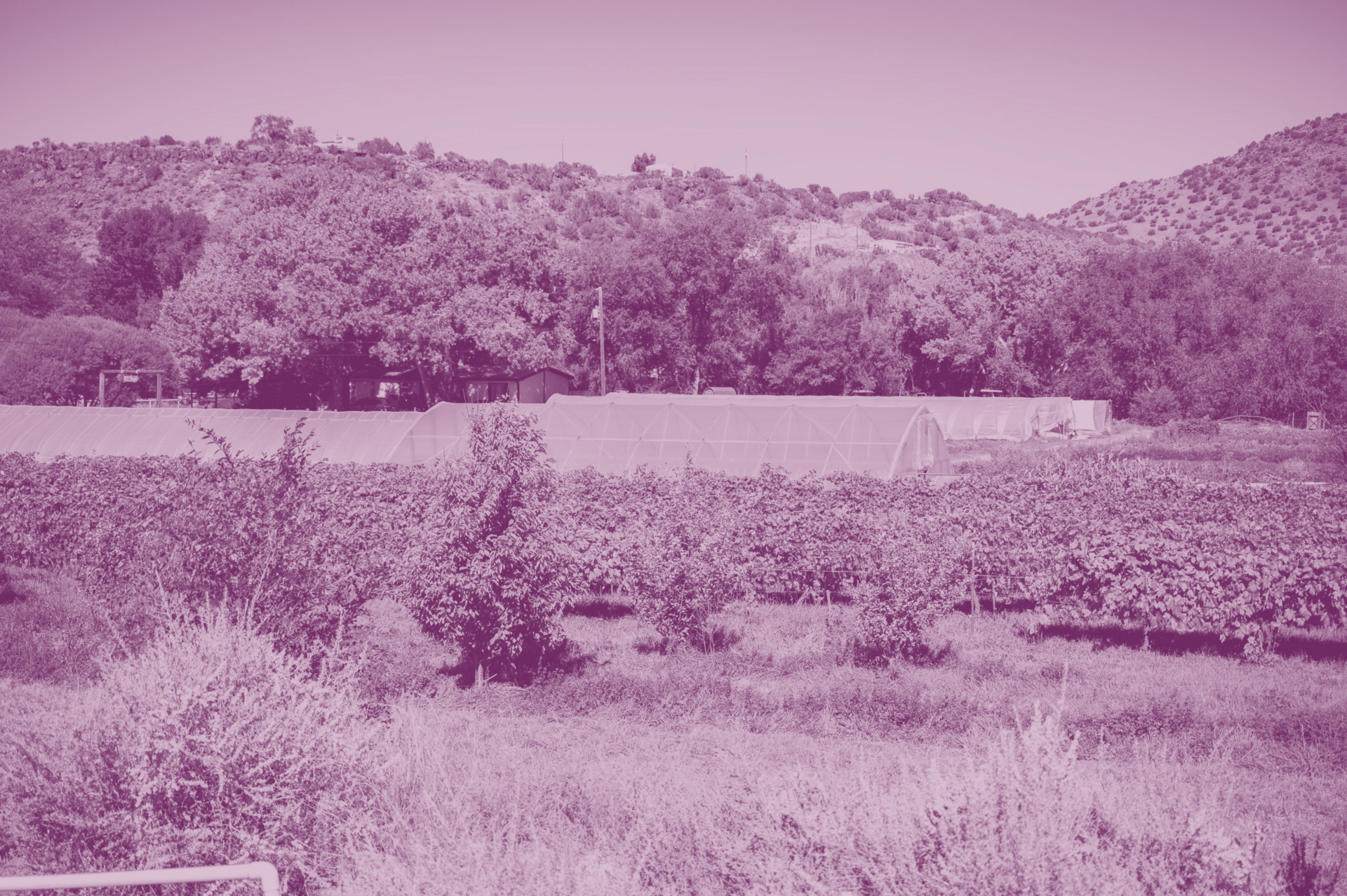Who we are
We are a group of viticulturists, garage winemakers, and educators passionate about farming grapes and making wine in Northern New Mexico.
We’d love for you to join us in our vineyards and cellars. Sign up for our newsletter to be notified of upcoming events →

Brook Brooks
Organic viticulturist, garage winemaker, fermenter

Renda Morton
Taste and sensory education

Tom Dixon
Organic viticulturist, farmer, garage winemaker, parciante of El Guicu ditch

Adam Bloomston
Permaculturist, pizzaiolo, parciante of Acequia de los Chupaderos

La Cienega Vineyard, La Cienega, New Mexico
La Cienega Vineyard is a half-acre private vineyard located within the traditional community of La Cienega. Planted in the mid-2000s, it is composed primarily of French-American hybrids — Aurora, Seyval Blanc, Traminette, Baco Noir, Chancellor, Leon Millot, Foch Kuhlman, Rougeon, and the American hybrid Valiant.
The site sits at 5,900 feet in a riparian corridor with loamy clay alluvial soils. It is flood-irrigated from a historic spring-fed acequia, El Guicu, that still operates as part of the community’s shared water system, reflecting both cultural continuity and agricultural adaptation in a high-desert environment.
The surrounding habitat is an important riparian migration pathway for birds — Hepatic Tanagers and Blue Grosbeaks have been spotted above the vines during the growing season.



Desert Nest Vineyard, Chupadero, New Mexico
At 6,800 feet in the foothills of the Sangre de Cristo Mountains, the Desert Nest Vineyard rests in a narrow valley within the traditional community of Chupadero.
Planted in 2025, the quarter-acre site includes ten cold-hardy hybrid varietals — Traminette, Aromella, Osceola Muscat, Frontenac Gris, Seyval Blanc, Itasca, Marquette, Chelois, St. Vincent, and Baco Noir. The vines are being cultivated within and alongside a native pollinator meadow.
The vineyard is drip-irrigated with a combination of rainwater collected from the house roof and groundwater from an agricultural well, with a long-term goal of transitioning to dry farming once the vines are established. Flood irrigation from the acequia is seasonal and depends on spring snowmelt and summer monsoon. The vineyard is expected to produce its first harvest in 2027.
The site sits to the south of the seasonal Chupadero River — a lush riparian corridor with alluvial sandy loam soils, surrounded by cottonwoods, Gambel oaks, three-leaf sumac, wild roses, and chokecherries. Each spring, the vineyard is alive with migrating birds such as Bullock’s Orioles and Summer Tanagers. Seven woodpecker species have been recorded here, with Lewis’s and Acorn woodpeckers seen or heard daily. In the summer of 2025, an American Dipper was spotted from the vineyard, fishing along the river’s edge.